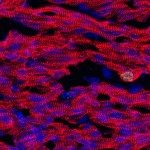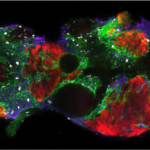About
“Dynamics of transcriptional and epigenetic signatures during hematopoietic lineage commitment and differentiation”
Human hematopoietic stem/progenitor cells (HSPC) are the source of all blood cell lineages, giving rise to developmentally restricted progenitors, precursors and mature cells. This process is fine-tuned at the transcriptional level by master regulators (transcription factors) that specify the lineage choice (commitment). Erythropoiesis is a well-established cell differentiation system and is amenable to the study of chromatin structure and gene transcription in health and disease. During erythropoiesis, there is a burst of erythroid specific gene expression followed by gradual silencing of the transcriptome. GATA1 and GATA2 are zinc-finger transcription factors recognizing a WGATAR consensus sequence and are essential for hematopoietic development. GATA2 has been mainly described as a positive regulator of gene expression, whereas GATA1 functions as an activator or repressor depending on gene context. The GATA2 locus is shut down during erythroid differentiation when levels of the closely related GATA1 transcription factor increase. This is known as the ‘GATA switch’ and the handover from GATA2 to GATA1 is essential for expansion, survival and terminal differentiation of erythroid cells. Specifically, GATA2 is expressed mainly in hematopoietic stem/progenitor cells (HSPC) and erythroid committed progenitors (EProg). GATA1 activity is detected in both early erythroid progenitors (EProg) and terminally differentiated erythroid precursors (EPrec), where it drives the transcriptional programs associated with the commitment (HSPC to EProg) and differentiation (EProg to EPrec) of HSPC towards the erythroid lineage; however, how GATA1 recognizes different binding sites in EProg compared to EPrec and why some of its target genes are activated instead of being repressed remain poorly understood. Finally, the KIT gene encoding for the stem cell factor receptor (SCFR) plays a major role in the survival and proliferation of EProg. During human erythropoiesis, KIT expression is maximal in EProg and decreases gradually during differentiation to disappear in mature erythroid cells. In mouse GATA2 is thought to activate KIT expression in early EProg, while GATA1 is responsible for KIT down-regulation upon differentiation; nevertheless, little is known about the transcriptional regulation of KIT gene in human cells.
Here, I will present our recent work focused on: (i) the identification of GATA2- and GATA1-targeted regulatory regions and genes repressed or activated by GATA factors at different stages of human erythroid differentiation. (ii) Definition and functional validation of regulatory regions targeted by GATA factors and involved in the control of KIT gene expression during human erythroid development.


